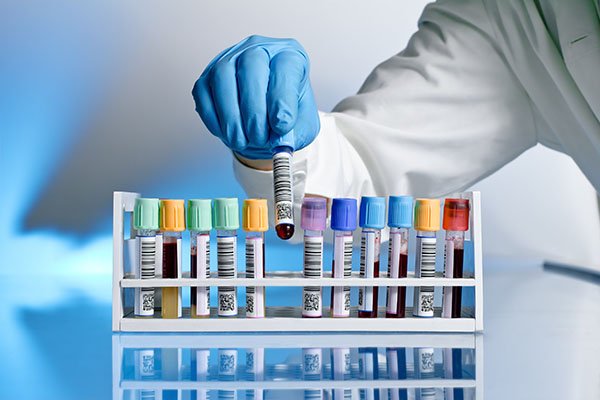Improving Health Literacy and Patient Education with Wearable Devices
Summary
- Wearable devices help patients track their health metrics more conveniently and continuously.
- These devices can provide valuable data for Healthcare Providers to better educate patients about their conditions and treatment plans.
- Improved health literacy and patient education can lead to better health outcomes and a more proactive approach to managing health.
Health literacy is a critical component of overall well-being and successful healthcare outcomes. When patients understand their health conditions, treatment options, and preventive measures, they are more likely to make informed decisions and actively participate in their care. However, improving health literacy can be challenging, especially in a fast-paced healthcare environment. This is where wearable devices come into play, offering a unique opportunity to enhance patient education and empower individuals to take control of their health. In this article, we will explore how wearable devices contribute to improving health literacy and patient education in the context of hospital supply and equipment management in the United States.
The Role of Wearable Devices in Healthcare
Wearable devices have gained popularity in recent years for their ability to monitor various health metrics and provide real-time data to users. These devices, such as fitness trackers, smart watches, and health monitoring bracelets, allow individuals to track their physical activity, heart rate, sleep patterns, and other vital signs conveniently and continuously. This data can help users better understand their overall health status and make informed decisions about their lifestyle habits.
Benefits of Wearable Devices in Improving Health Literacy
When it comes to managing chronic conditions or following a treatment plan, wearable devices can be invaluable tools for patients. Here are some benefits of using wearable devices to improve health literacy and patient education:
1. Data Tracking and Monitoring
- Wearable devices enable patients to monitor their health metrics regularly, providing a comprehensive overview of their well-being.
- By tracking data such as heart rate, blood pressure, and physical activity, patients can gain insights into their health status and identify patterns or changes that may require attention.
2. Remote Patient Monitoring
- With advances in technology, wearable devices can now connect to Healthcare Providers' systems, allowing for remote monitoring of patients' health data.
- This real-time monitoring enables healthcare teams to intervene proactively if any concerning trends or abnormalities are detected, leading to better outcomes for patients.
3. Increased Patient Engagement
- Wearable devices can engage patients in their health by providing personalized feedback, setting goals, and offering motivational prompts to stay active and healthy.
- Patients who are actively involved in monitoring their health are more likely to adhere to treatment plans and adopt healthier behaviors, leading to improved health outcomes in the long run.
Utilizing Wearable Device Data for Patient Education
Healthcare Providers can leverage the data collected from wearable devices to enhance patient education and communication. By analyzing the data and sharing relevant insights with patients, providers can help individuals better understand their health conditions, treatment progress, and areas for improvement. Here are some ways wearable device data can contribute to patient education:
1. Personalized Health Insights
- Healthcare Providers can use wearable device data to create personalized health profiles for each patient, detailing their unique health metrics and progress over time.
- By discussing these insights with patients, providers can help individuals understand their health risks, monitor key indicators, and make informed decisions about their care.
2. Treatment Adherence and Goal Setting
- Wearable device data can track patients' adherence to treatment plans and lifestyle changes, providing accountability and motivation for achieving health goals.
- Providers can use this data to identify challenges or obstacles to adherence and work with patients to develop strategies for overcoming them.
3. Educational Resources and Support
- Healthcare Providers can recommend educational resources, such as articles, videos, and apps, based on patients' health data and interests.
- By providing tailored information and support, providers can empower patients to take a proactive role in managing their health and making informed decisions about their care.
Conclusion
Wearable devices play a significant role in improving health literacy and patient education by empowering individuals to track their health metrics, engage in their care, and make informed decisions about their well-being. By leveraging the data collected from these devices, Healthcare Providers can enhance patient communication, personalize education efforts, and promote better health outcomes for individuals. As wearable technology continues to evolve, the opportunities for improving health literacy and patient education in the United States healthcare system are boundless.

Disclaimer: The content provided on this blog is for informational purposes only, reflecting the personal opinions and insights of the author(s) on the topics. The information provided should not be used for diagnosing or treating a health problem or disease, and those seeking personal medical advice should consult with a licensed physician. Always seek the advice of your doctor or other qualified health provider regarding a medical condition. Never disregard professional medical advice or delay in seeking it because of something you have read on this website. If you think you may have a medical emergency, call 911 or go to the nearest emergency room immediately. No physician-patient relationship is created by this web site or its use. No contributors to this web site make any representations, express or implied, with respect to the information provided herein or to its use. While we strive to share accurate and up-to-date information, we cannot guarantee the completeness, reliability, or accuracy of the content. The blog may also include links to external websites and resources for the convenience of our readers. Please note that linking to other sites does not imply endorsement of their content, practices, or services by us. Readers should use their discretion and judgment while exploring any external links and resources mentioned on this blog.

